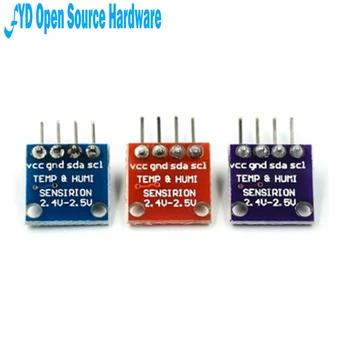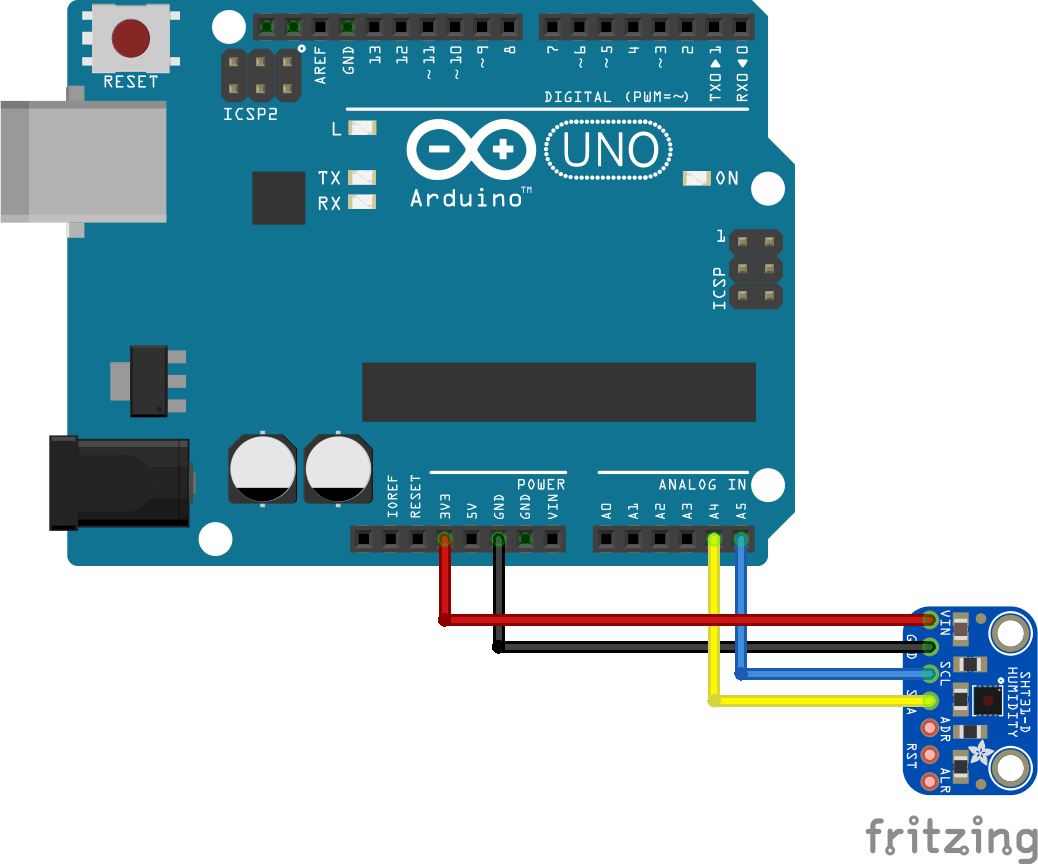In this article we look at the SHT35 humidity sensor, this is very similar to the SHT30 and SHT31 sensors in the same family but is a more expensive one.
We connect the SHT35 humidity Sensor to an Arduino Uno – other arduino boards should be Ok as well but I have not verified this
Sensor Information
The digital SHT3x humidity sensor series takes sensor technology to a new level. As the successor of the SHT2x series it sets the industry standard in humidity sensing. The SHT3x humidity sensor series consists of a low-cost version with the SHT30 humidity sensor, a standard version with the SHT31 humidity sensor, and a high-end version with the SHT35 humidity sensor. Automotive grade versions are also available.
The SHT3x humidity sensor series combines multiple functions and various interfaces (I2C, analog voltage output) with a applications-friendly, very wide operating voltage range (2.15 to 5.5 V). The SHT3x humidity sensor is available in both large and small volumes.
The SHT3x builds on a completely new and optimized CMOSens® chip, which allows for increased reliability and improved accuracy specifications. The SHT3x offers a range of new features, such as enhanced signal processing, two distinctive and user-selectable I2C addresses, an alert mode with programmable humidity and temperature limits, and communication speeds of up to 1 MHz.
The DFN package has a footprint of 2.5 × 2.5 mm2 with a height of 0.9 mm. This allows for integration of the SHT3x into a great variety of applications. Additionally, the wide supply voltage range of 2.15 to 5.5 V and variety of available interfaces guarantee compatibility with diverse integration requirements.
Features
| Size | 2.5 x 2.5 x 0.9 mm |
| Output | I²C, Voltage Out |
| Supply voltage range | 2.15 to 5.5 V |
| Energy consumption | 4.8µW (at 2.4 V, low repeatability, 1 measurement / s) |
| RH operating range | 0 – 100% RH |
| T operating range | -40 to +125°C (-40 to +257°F) |
| RH response time | 8 sec (tau63%) |
Parts Required
You can connect to the sensor using dupont style jumper wire.
| Name | Link |
| Arduino Uno | UNO R3 CH340G with usb cable |
| SHT35 | SHT35 temperature and humidity sensor module |
| Connecting cables | Male to Male + Male to Female and Female to Female Jumper Wire Dupont Cable |
Schematic/Connection
I used 3.3v from the Arduino Uno – 5v should be ok. The part says SHT31 but the SHt35 is the same pinout.
Code Example
This example uses the library from the following location – https://github.com/Risele/SHT3x
[codesyntax lang=”cpp”]
#include <SHT3x.h>
SHT3x Sensor;
void setup()
{
Serial.begin(19200);
Sensor.Begin();
}
void loop()
{
Sensor.UpdateData();
Serial.print("Temperature: ");
Serial.print(Sensor.GetTemperature());
Serial.write("\xC2\xB0"); //The Degree symbol
Serial.println("C");
Serial.print("Humidity: ");
Serial.print(Sensor.GetRelHumidity());
Serial.println("%");
delay(500);
}
[/codesyntax]
Output
Here is an example of what I saw in the serial monitor window – you may see some different results
Temperature: 27.65°C
Humidity: 58.01%
Temperature: 28.30°C
Humidity: 59.60%
Temperature: 28.86°C
Humidity: 60.85%
Temperature: 29.38°C
Humidity: 61.74%
Temperature: 29.36°C
Humidity: 62.14%
Links



